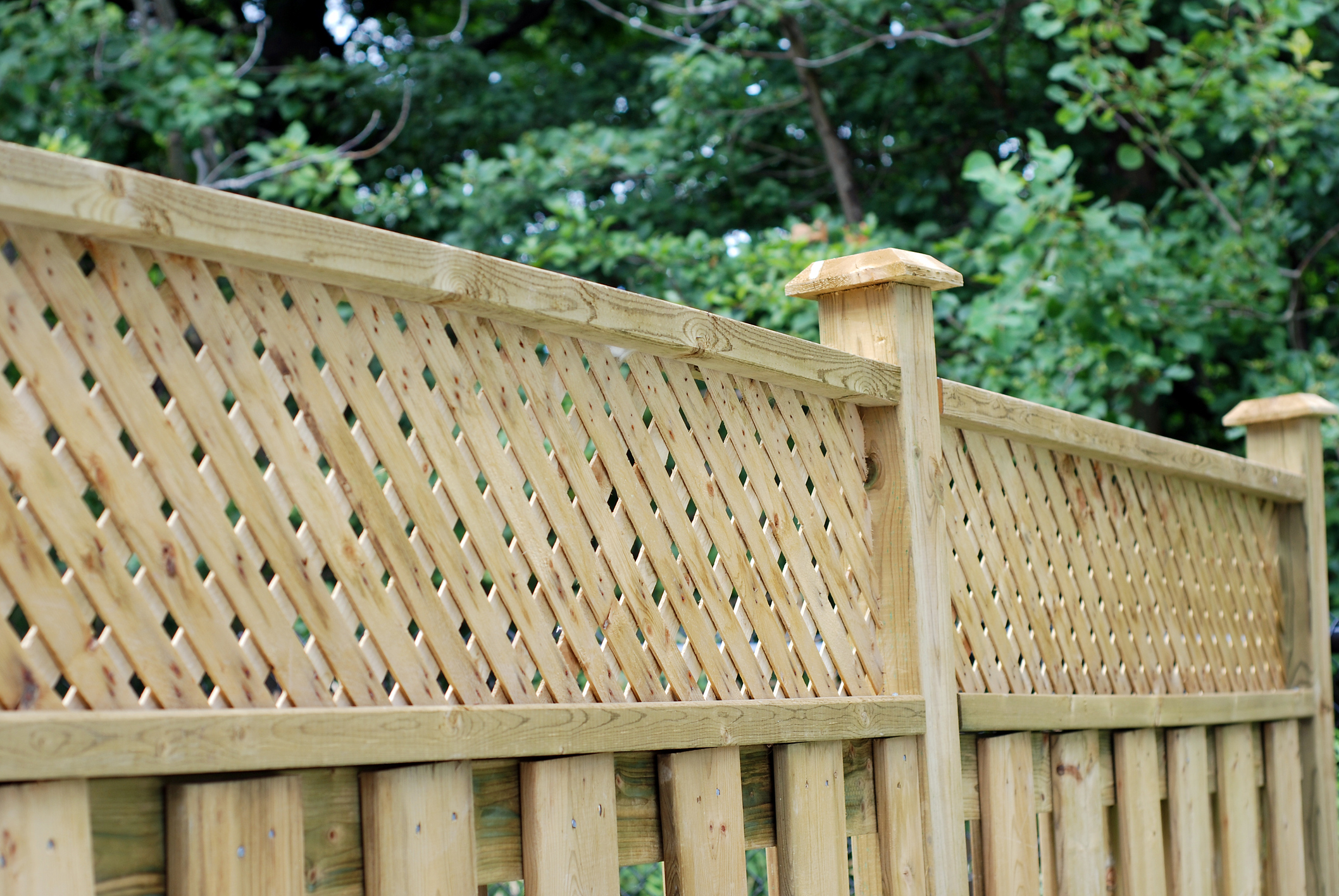Why Choose a Lattice Fence? Benefits You’ll Actually Notice
I’ll admit, there’s a reason I was drawn to it in the first place. Lattice has its perks:
✅ It Looks Good
No lie — a well-framed lattice fence looks sharp. It can dress up an otherwise plain yard, especially if you’ve got a garden or climbing plants.
✅ It’s Affordable
Compared to solid wood or vinyl panel fencing, lattice is easier on the wallet. You can usually build a full section for less than a solid privacy panel.
✅ It Allows Airflow
Unlike a solid fence, lattice lets air pass through. That’s great if you live somewhere hot or want a bit of breeze on your patio.
✅ Great for Climbing Plants
Lattice and vines go together like burgers and barbecue. Clematis, jasmine, roses — they all love it. And once they grow in, you get extra shade and privacy.
Want a weekend woodworking project? Try building a DIY birdhouse.
Drawbacks of Lattice Fencing: What to Watch Out For
❌ It’s Not Super Private (Until It Is)
Straight out of the box, lattice isn’t very private. You can see right through it. It gets better when the plants grow in, but that can take time — and I’m not the most patient gardener.
❌ Not the Most Durable
Lattice isn’t built like a tank. Thin wood strips can crack or warp, especially in extreme weather. If you’ve got rowdy pets or strong winds, plan on replacing a panel now and then.
❌ Maintenance Can Be Annoying
You’ll need to seal or paint wood lattice, or it’ll start showing wear. Vinyl is easier, but it can still crack over time. And trust me, painting lattice is a special kind of tedious — like painting 200 mini fences at once.
Tip: Use a sprayer if you’re finishing lattice. Or better yet, finish it before installing.
Best Uses for Lattice Fence Panels in the Yard
Here’s where lattice shines:
- Deck skirting
- Garden dividers
- Trellis walls for climbing plants
- Half-height patio enclosures
- Light boundary fencing where full privacy isn’t needed
If you’re trying to block out the noisy neighbors or a view you’d rather not see — lattice alone won’t cut it. But paired with landscaping or backed with fabric panels, it can still work.
Should You Frame Your Lattice Fence Panels?
Yes. Always. Framing your lattice with 2x4s or trim makes it last longer, look finished, and prevents sagging. It also makes installation way easier.
I didn’t frame my first panel. Big mistake. It bowed like a cheap bookshelf under pressure. Lesson learned.
Thinking of something more private? Learn how to install plywood wall paneling.
Lattice Fence Installation Tips (From Trial and Error)
- Use pressure-treated lumber or rot-resistant wood like cedar
- Pre-drill your holes to avoid cracking the slats
- Frame before you paint or stain — and finish it before mounting
- Anchor well in the ground — especially in windy areas
- Use post caps — they add a nice look and keep water out
If you’re planning to install it near a garden, make sure the materials are safe for nearby plants.
Final Verdict: Is Lattice a Good Fence Material?
Yes… if you know what you’re getting into.
Lattice isn’t a fortress. But it looks great, lets your yard breathe, and blends beautifully with gardens. If you’re after light privacy or want to support some vines, it’s a winner.
Would I use it again? Absolutely. But this time, I’d frame it, stain it before installing, and maybe recruit a buddy to help hold the panels while I fumble with the drill.




